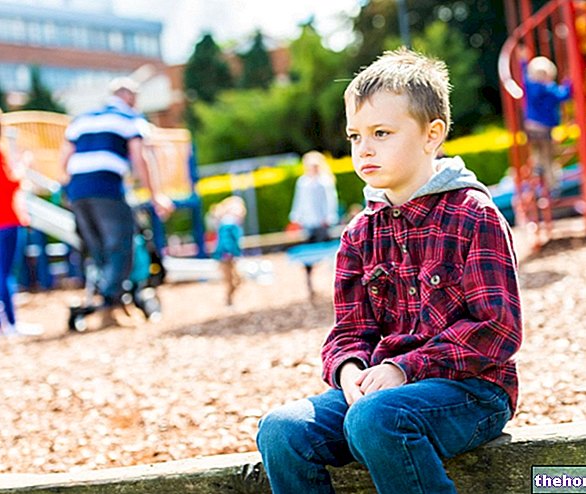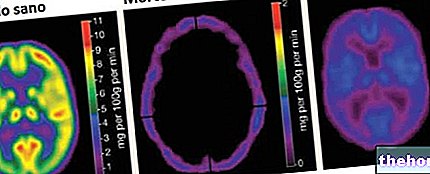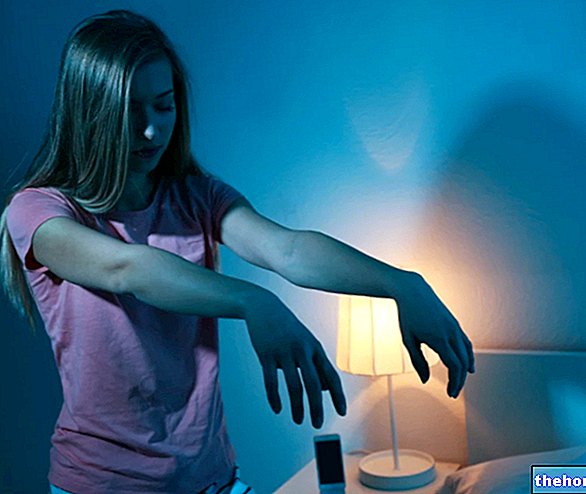Definition
In the absence of infectious diseases affecting the central nervous system, febrile seizures delineate seizures, critical or otherwise, typical of children aged 6 months to 6 years. Convulsions during febrile diseases seem to be one of the most common neurological diseases of the pediatric age.
To be defined as such, a febrile convulsion must be triggered by a condition of hyperpyrexia (fever> 38 ° C *) during an extra-cerebral disease (at least in appearance).
* 38 ° C: approximate minimum temperature rise to which we refer to hypothesize a possible manifestation of the febrile convulsion. It should be pointed out that the minimum temperature rise we are discussing varies (and has varied) over time based on measurement methods, statistics and scientific societies. In the context of febrile convulsions, the value of 38 ° C expresses the minimum body temperature value established by theAmerican Academy of Pediatrics.
Observing a child in the midst of a febrile seizure is often alarming and shocking for many mothers. Many women, looking at their child during a febrile seizure, cannot estimate the duration of the seizure with sufficient approximation: in such circumstances, even a few seconds can seem like minutes. This parameter, as we will see in the course of the discussion, is fundamental to hypothesize the possible impairment of the child's neurological activities.
It is estimated that 2-4% of European children are affected by a form of febrile convulsion, whose peak incidence is observed around 18 months of age. However, the vast majority of febrile seizures are harmless to the young patient, so a healthy baby is very unlikely to be permanently injured following a similar seizure.
Let us now examine the various forms of febrile seizures, therefore the causes, symptoms and available therapies.
Classification
Febrile seizures can be divided into two macro-groups: the simple forms and the complex variants.
Simple febrile seizures
To be defined as "simple", febrile seizures must depend on a seizure generalized * lasting less than 15 minutes. Typically, this variant occurs in healthy children aged 6 months to 6 years with normal psychomotor development. In such circumstances, the cause lies in hyperpyrexia (fever), NOT in a CNS disease.
Simple febrile seizures do not recur more than once within 24 hours of the first episode. Affected children have a normal encephalogram and may have some genetic predisposition for febrile seizures.
Complex febrile seizures
Complex febrile seizures are also referred to as "high risk" since they can escalate into epilepsy. Seizures can be focal length **, partial or lateralized ***, lasting more than 15 minutes (a single episode) or 30 minutes (episodes repeated even in 24 hours). The target of febrile seizures can also be children younger than 6 months or older than 6 years. The encephalogram of these patients is generally altered (regardless of the current or imminent seizure). Most of the affected patients have a positive family history of epilepsy and / or neurological abnormalities.
If a second febrile seizure occurs within 15 minutes of administering an anticonvulsant drug (used to treat the first seizure), the patient is almost certainly suffering from the "complex" variant of febrile seizures.
We speak precisely of state of feverish illness when the convulsion lasts for over 30 minutes or is characterized by several short convulsive crises, without the recovery of the patient's consciousness. In such situations, the crises are mainly of the "clonic" type, and tend to occur at an age greater than 18 months.
Among the complex forms we also briefly recall the unilateral febrile convulsions: these can last for short time or for a lot of time. In the first case, it is possible that the child - generally suffering from pre-existing encephalopathy - may undergo a post-critical, often transient, hemiparesis ****. For unilateral and long-lasting complex febrile seizures, the patient may develop ***** hemiplegia, post-critical flaccid hemiparesis, and epilepsy.
Glossary
Terminology
- Generalized seizure *: convulsive discharge affects both hemispheres of the brain. This particular convulsion is characterized by the bilateral nature of the motor spasms. Generalized seizures are NOT necessarily subordinate to focal cerebro-cortical pathology.
- Focal crisis **: typical manifestations of a distinct epileptogenic event within the cerebral cortex. Often, the manifestation of a focal seizure masks underlying focal intracranial pathology
- Partial seizure / lateralized seizure ***: the seizure begins in a particular and circumscribed brain site. Often, therefore, these seizures involve a specific brain portion of a single hemisphere
- Hemiparesis ****: obvious difficulty / inability to move a lateral part of the body
- Hemiplegia *****: total motor impossibility involving one half of the body, expression of a counter-lateral brain damage to the disease
In addition to the classification just reported, febrile convulsions can also be distinguished into other sub-categories, since the distinction between simple and complex forms is not always so clear-cut. Based on the "phenotypes", febrile seizures are divided into:
- Early febrile seizures: they occur within 12 months of the baby's life
- Late febrile seizures: onset after the child is 6 years old. They can persist even beyond 6 years
- Long-lasting febrile seizures: The spasm lasts over 15-20 minutes
- Febrile seizures with low fever: the seizure occurs in the presence of a fever of 37.5-38 ° C
- Relapsing febrile seizures: Seizures often occur at (almost) every episode of altered basal temperature
- Aphebrile seizures: they occur without fever
- Febrile seizures associated with neurological disorders: seizures are caused by problems with the CNS
Febrile seizures and epilepsy
There is no close correlation between neonatal / pediatric seizures and the secondary development of a true epileptic form. It is estimated that the possible transformation occurs in a percentage between 25% and 56% of cases.
In any case, some risk factors have been identified that predispose the patient to epilepsy following a febrile seizure event. Children of epileptic parents are more at risk of developing a form of epilepsy after a first episode of febrile seizure. Even the presence of an "early anomaly in psychomotor development could, in some way, favor the progression (in a negative sense) of the convulsive pathology.
It has also been documented how a particular correlation / concatenation of particular events can affect the degeneration of febrile convulsion into epilepsy:
- Repeated febrile seizures occurring within 24 hours of the first seizure episode
- Duration of convulsion greater than 15 minutes
- Focal signs
- Detected transient neurological abnormalities
Child care
WHAT TO DO IF ...
- … A child <18 months of age has a first episode of febrile seizures. In such situations, hospitalization is recommended. In some patients (suspected of meningitis or already being treated with antibiotics BEFORE the febrile seizure) a lumbar puncture (rachycentesis) is required
- … A child aged> 18 months has a first episode of febrile seizures. In such circumstances, hospitalization may not be necessary IF the patient is stable and has no signs or symptoms that require diagnostic assessment. Parents need to be carefully instructed on what to do.
- … A child experiences a second simple febrile seizure (in the context of a further febrile episode). Hospitalization is not necessary. However, the possibility - albeit remote - of a masking of infectious pathologies affecting the CNS should be considered.
- … A child has complex febrile convulsions: hospitalization is necessary for appropriate diagnostic tests.
Other articles on "Febrile seizures - Convulsions in the child"
- Convulsions: classification, diagnosis and therapy
- Convulsions
- Febrile seizures: Symptoms, Diagnosis, Therapy
- Febrile seizures: Symptoms, Diagnosis, Therapy























-nelle-carni-di-maiale.jpg)




